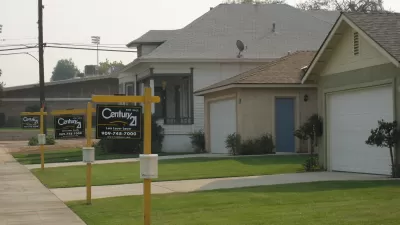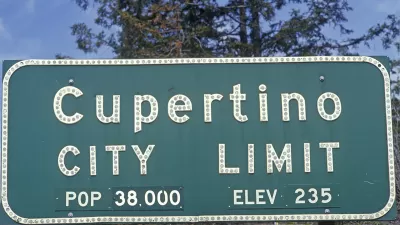According to a recent study, white flight proliferates even in the suburbs, as suburbs attract large numbers of middle-class minority residents and white residents flee so-called 'ethnoburbs'.

A new study by Samuel Kye, a doctoral student in the Department of Sociology in Indiana University Bloomington's College of Arts and Sciences, was published earlier this week in Science Daily. The study, using Census tracts from all over the nation to examine residential patterns, is "one of the first to look at white Americans' response to the influx of suburban ethnic populations."
According to Kye, "the sheer force of immigration and suburbanization has resulted in the unmistakable rise of middle-class yet ethnic suburban communities. However, my research shows that despite their distinct middle-class character, ethnoburbs have lost a steady flow of white residents over the past 20 years."
Unlike the utopian image of suburban middle-class melting pots, "the once majority-white suburbs in Kye's study appeared especially sensitive to the growth and emergence of non-white populations. Levels of 'white flight' and segregation attributable to the presence of minority groups were distinctly higher in suburbs than in urban neighborhoods." However, according to Kye, one silver lining of the study shows that, "the level of suburban segregation for most minority groups had stopped increasing and began instead to decrease from 1990 to 2010—except for African American neighborhoods."
Moreover, "the fact that levels of segregation for blacks continue to grow even in their middle-class communities," raises questions about future declines in black/white segregation.
FULL STORY: Ethnoburbs: Segregation in suburbia

Planetizen Federal Action Tracker
A weekly monitor of how Trump’s orders and actions are impacting planners and planning in America.

Restaurant Patios Were a Pandemic Win — Why Were They so Hard to Keep?
Social distancing requirements and changes in travel patterns prompted cities to pilot new uses for street and sidewalk space. Then it got complicated.

Map: Where Senate Republicans Want to Sell Your Public Lands
For public land advocates, the Senate Republicans’ proposal to sell millions of acres of public land in the West is “the biggest fight of their careers.”

Maui's Vacation Rental Debate Turns Ugly
Verbal attacks, misinformation campaigns and fistfights plague a high-stakes debate to convert thousands of vacation rentals into long-term housing.

San Francisco Suspends Traffic Calming Amidst Record Deaths
Citing “a challenging fiscal landscape,” the city will cease the program on the heels of 42 traffic deaths, including 24 pedestrians.

California Homeless Arrests, Citations Spike After Ruling
An investigation reveals that anti-homeless actions increased up to 500% after Grants Pass v. Johnson — even in cities claiming no policy change.
Urban Design for Planners 1: Software Tools
This six-course series explores essential urban design concepts using open source software and equips planners with the tools they need to participate fully in the urban design process.
Planning for Universal Design
Learn the tools for implementing Universal Design in planning regulations.
Heyer Gruel & Associates PA
JM Goldson LLC
Custer County Colorado
City of Camden Redevelopment Agency
City of Astoria
Transportation Research & Education Center (TREC) at Portland State University
Camden Redevelopment Agency
City of Claremont
Municipality of Princeton (NJ)





























